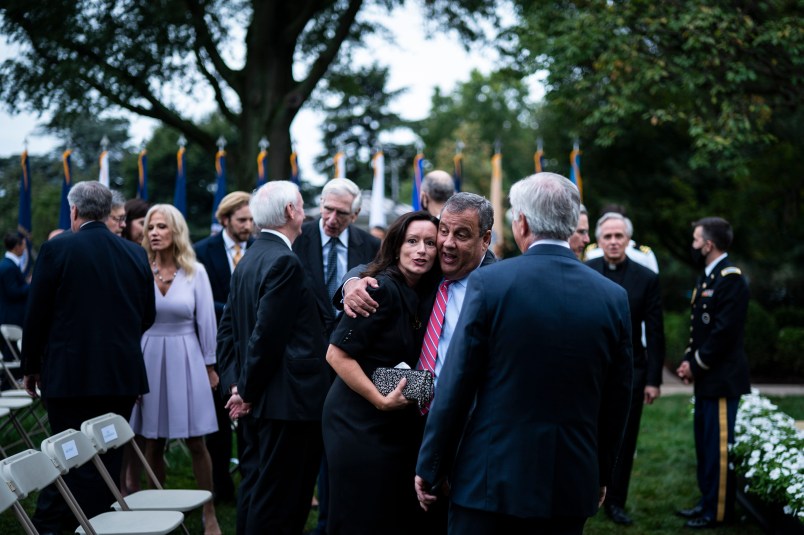The White House’s sudden announcement on Tuesday that it had completed “contact tracing” for its COVID-19 outbreak raises far more questions than it answers.
The process that the White House has alluded to has been shrouded in needless secrecy, with even basic details like how officials are investigating the outbreak not released to the public. Some people who have been in close contact with President Trump have said that they weren’t contacted by White House medical officials, while those same medical officials have remained tight-lipped about what exactly it is that they’re doing.
The Times reported on Wednesday that those exposed were being contacted by email, and that the investigation was focused on establishing who was in close contact with President Trump in the 48 hours before his Thursday positive test.
Deputy White House Press Secretary Brian Morgenstern told reporters on Wednesday that medical professionals from the White House Medical Unit were interviewing people and identifying close contacts of President Trump’s from 48 hours before his positive test.
“And the purpose is to mitigate further transmission of the virus correctly, it’s not to go back and identify patients zero,” Morgenstern said, adding that others who test positive besides President Trump are also having their contacts investigated.
All this leaves crucial questions unanswered — the sort of questions that would typically be answered as part of the contact tracing process. Among them are how long the virus has been spreading around the top of the government, how it entered and via whom, and how serious the infections of key members of the executive branch — including President Trump — have been.
The process described by the White House falls far short of contact tracing as it is typically understood.
Susan Hassig, an epidemiologist at Tulane University, described the process to TPM as “completely inadequate.”
She added that had the CDC been asked to get involved, it likely would have “looked at all of the test results for everyone in the White House in terms of when they last tested negative and tried to build a timeline of what was really the introduction point.”
“Because right now, we don’t know that,” Hassig added.
Prominent public health experts have pointed out that what the White House has described as a “contact tracing” effort has in fact shed almost no light on what actually happened.
Former Centers for Disease Control Director Dr. Tom Frieden wrote in a Wednesday tweet that “we still don’t know the basics” around the timeline of President Trump’s infection.
We still don't know the basics of when the President was last negative, when he was first positive, and who else he may have exposed. This is the kind of investigation the CDC and state and local health departments do every day to help stop outbreaks before they spread.
— Dr. Tom Frieden (@DrTomFrieden) October 7, 2020
Dr. Ashish Jha, Dean of the Brown University School of Public Health, said on Wednesday that he was “baffled” about why the White House is “being evasive on this.”
“He is the President, a lot of people have been around him, they should just release the information,” Jha said.
It also remains unclear whether the “contact tracing” effort described by the White House has really ended. White House staff were reportedly informed on Tuesday that medical staff had finished “all contact tracing” from the outbreak, while Morgenstern’s comments to reporters on Wednesday made it sound like Trump administration officials were ready to continue with the effort.
Had Trump been regularly tested, the results could also reveal how infectious Trump himself was at the time of each test, said Hassig, the Tulane epidemiologist. The more sensitive and specific tests — known as PCR tests — run cycles on the sample material to identify the virus.
“The more cycles you have to do, the less virus there was, so a low cycle count suggests a highly infectious viral threat,” Hassig said.
Determining President Trump’s viral load could also provide a clue to finding out when he was infected, narrowing down the number of events and meetings he had. But the White House has not released those results.
If the did, they could also help determine who is a superspreader: people with high viral loads that emit large volumes of COVID-19 can infect far more of those around them than other patients.
And this isn’t a purely intellectual exercise: it’s a matter of health concern not only for the President, but for everyone who has met with him in recent days.
Hassig added that it wasn’t clear why the White House’s “contact tracing” appeared to only focus on Trump specifically.
“The contact tracing is associated with every positive, not just the President — that’s the point,” she said. “Once positives are identified the pool of people metastasizes, and the investigation metastasizes as well.”



